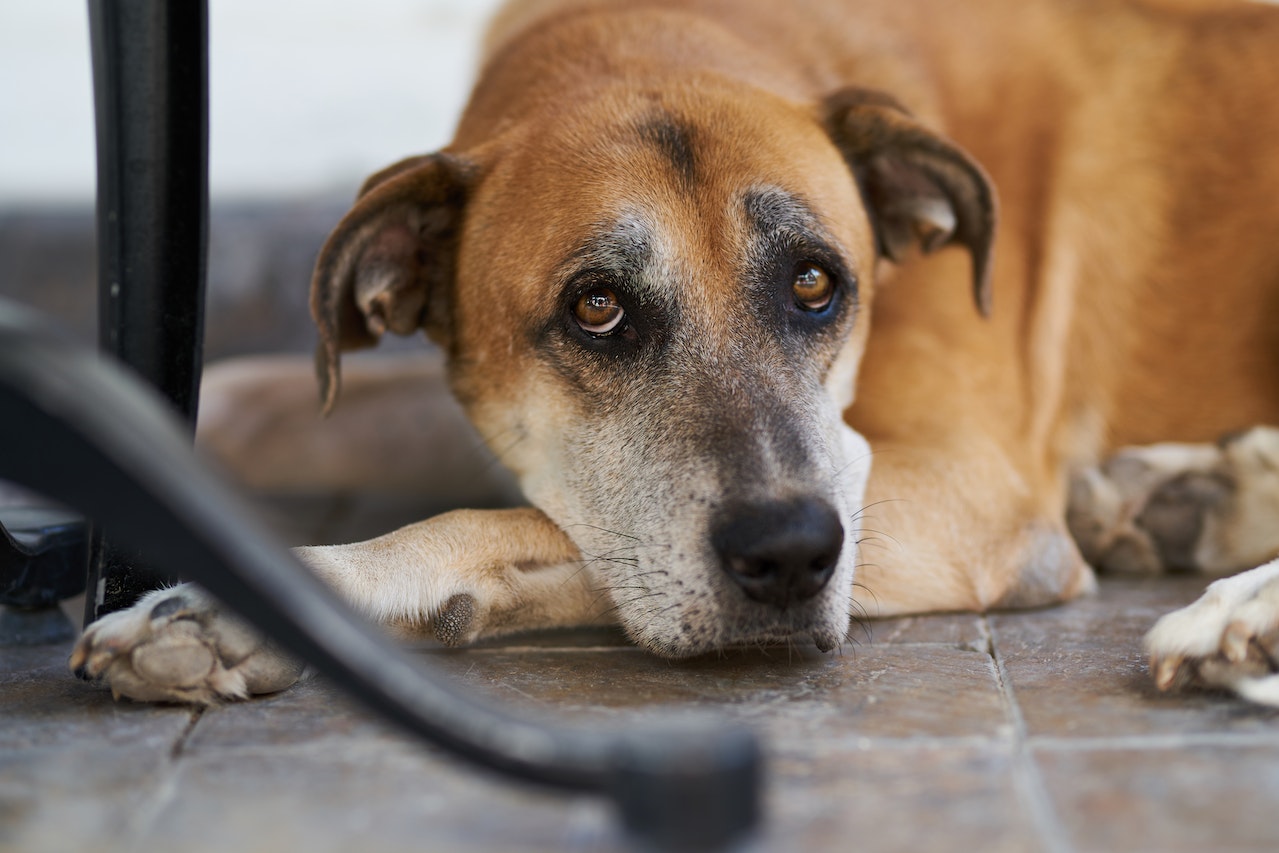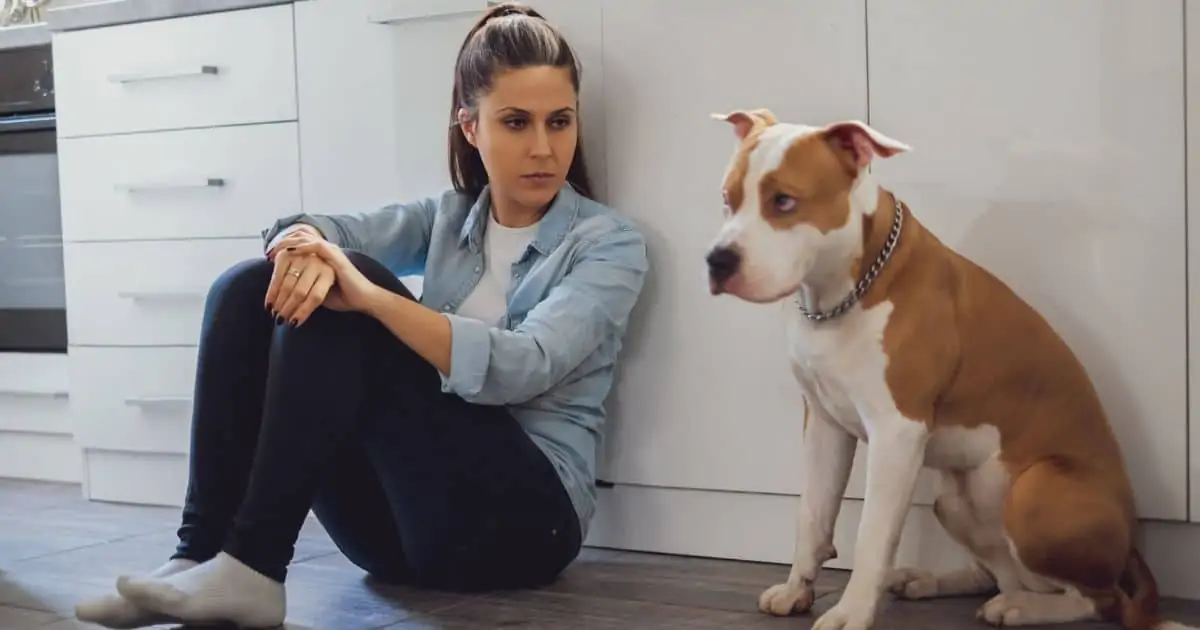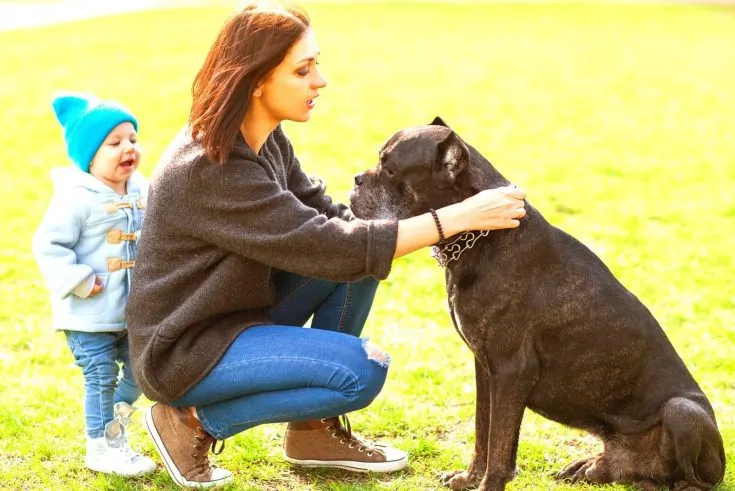When you return from work, you open the door and the dog slinks over instead of running towards you with a wagged tail. The dog is laying down on its back, with his eyes closed and his tail between his back legs. Something’s wrong. It suddenly becomes clear what it is. The dog appears guilty.

You walk in the living room, passing the dog as you go. You were right! You were right! “Bad dog!” You say it, and they will be put in their basket. “If it’s wrong, don’t do it!”
They looked guilty and it was clear that they were feeling uneasy. If that were the case, then why did they chew the cushion? Are they really sorry, or just trying to look guilty?
Signs a Dog is Faking Guilt
Much debate surrounds whether dogs can understand the emotion of guilt. It is likely that dogs don’t feel guilty and their body language is not guilt. You could even say that the dog is trying to feign guilt, since we interpret it as such. However, their true emotion is stress, fear, or anxiety.
One of the most important body language signs to watch out for is the dog not looking at you in the eye. The dog might turn their head slightly away from you and look at you through the corner of their eyes. The dog will likely keep their head down and slink along when they move.

The classic indicator of a dog’s mood is the tail. It should be held low, perhaps right between the back legs. If it does wag it will do so slowly and restrainedly, perhaps with the tip.
Additionally, dogs who are submissive to their owners may roll over to show their stomachs or urinate submissively. This is what we might consider a sign of repentance. But they are really saying that they are not a threat to us.
History of Dogs Making Guilt
For decades, if not centuries, our canine companions have been misunderstood. A classic example of this is the dominance theory, in which the hound by our hearth is secretly plotting to take over the world. In order to get the dog to behave and be obedient, it’s therefore essential to assert yourself and be dominant so that the dog respects you.
This theory about how dogs behave is now completely discredited.
Similar to the way we have been blaming dogs for human guilt over decades, so too do we. We now understand that the body language we see is submissiveness and not guilt.
This conclusion was also made possible by modern psychology and understanding of dog behavior. A dog with the same mental abilities and range of emotions that a child of two or three years old can be found to have similar emotional and mental capabilities. Guilt is an advanced emotion, as it requires the subject to have a sense and understanding of right and wrong. A toddler is not like a parent. Parents of small children will know this. They need to be taught and guided on what actions are acceptable.

A dog doesn’t have the emotional repertoire to feel guilty and so can’t know what it feels like to pretend guilt. Instead, we attribute guilt to the dog’s submissive body language and then accuse the innocent hound of faking guilt.
Science of Dogs Creates Guilt
Plenty of dog owners believe their dog feels guilt because of the body language their pet pal displays. However, what people are doing is misinterpreting what is actually submissive behavior. That contrite body language is actually a response to seeing someone in authority over them being angry or anticipating them being angry.
Animal behaviorists have examined the canine reactions to determine if they feel guilty. If an owner becomes angry with a dog, the submissive one is the one that looks guilty, even if the dog was innocent.
It is important to remember that dogs who look guilty are often anxious or afraid of your reactions.
How to train a dog to fake guilt
It is a sad fact that all too often we accidentally teach our dogs to fake guilt as a result of our actions. It’s as well to realize how easily this is done so that if you are faced with a similar scenario, you can pause and rethink your reaction.

Let’s suppose your dog poops on the floor when you return home. You tell your dog that they are house-trained, and they should be able to recognize when it is okay to soil indoors. The dog is appropriately chastised, and then he slinks off.
The same thing happens again a few days later. This time, it is the dog’s guilty expression that alerts you to the problem. You follow the dog around the house looking for the poop. You return home and the dog looks guilty. Why do they do this? You feel frustrated at their disobedience and you send them to bed.
The dog did not make the mental leap between punishment and soiling indoors on the first occasion. The dog saw their owner as angry and came home. Dogs can’t think about the past, so any accidental poop will be forgotten.
The dog now is anxious about their owner returning home. If they do not, they will react in the same way as before. We mistakenly interpret their submissive body language to be guilt, believing that the dog is more aware of their actions than they are.
You don’t have to tell your dog what to do if they poo while you are away. Instead, clean up the mess and ensure that the dog has enough time to go. It is futile to punish the dog for their behavior.